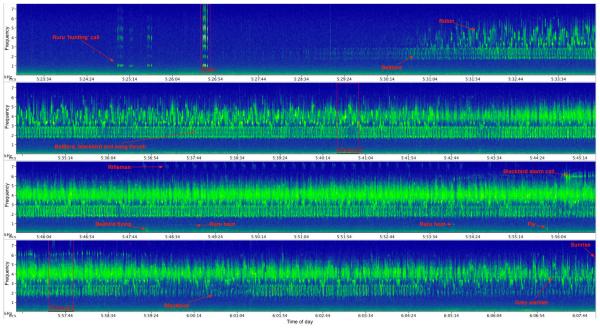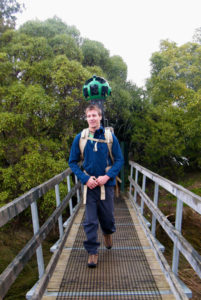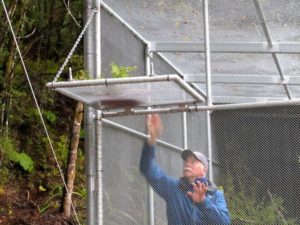
Canaan dawn chorus spectrogram
In November Andrew Digby volunteered to assist Project Janszoon placing acoustic recorders in the forests around Canaan in the hope that we might detect kiwi. Andrew has just completed a PhD on kiwi acoustics and has more expertise in this than anyone. While we missed out on kiwi there were some good recordings of other birdlife. The above image is a spectrogram of a sound recording of 45 minutes before sunrise near Harwoods Hole in early November 2013. A spectrogram is a visual representation of sound. The horizontal axis is the time of day, the vertical axis the frequency (or pitch) of the sound, and the colours depict the volume of the sound (green is loud; blue is quiet). By separating the sound by frequency/pitch as well as time, individual species can be identified by their signature pattern on the spectrogram. Identifying birds using these visual patterns is much quicker than listening to them, so using acoustic recorders is a very efficient way of species monitoring. Recorders also enable identification of species such as bats which call above the range of human hearing (>20 kHz).
In the spectrogram, the transition from the quiet night period to the dawn chorus is clear. At first only a ruru is calling. Soon after bellbirds start the dawn chorus, then robins join in, before many other species (blackbirds, grey warblers, song thrushes, rifleman, tomtit) join in to create a crescendo that then dies away again. Rifleman squeaks are just visible at the top of the frequency range. At a much lower pitch, a distant ruru continues to hoot during the dawn chorus. Other sounds can also be ‘seen’, like a bellbird flying past the recorder, and even a fly buzzing nearby!
Sections of the spectrogram marked with red rectangles can be listened to: these are a ruru ‘hunting call’, and two stages of the dawn chorus:



